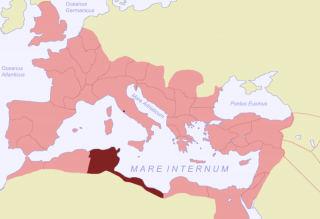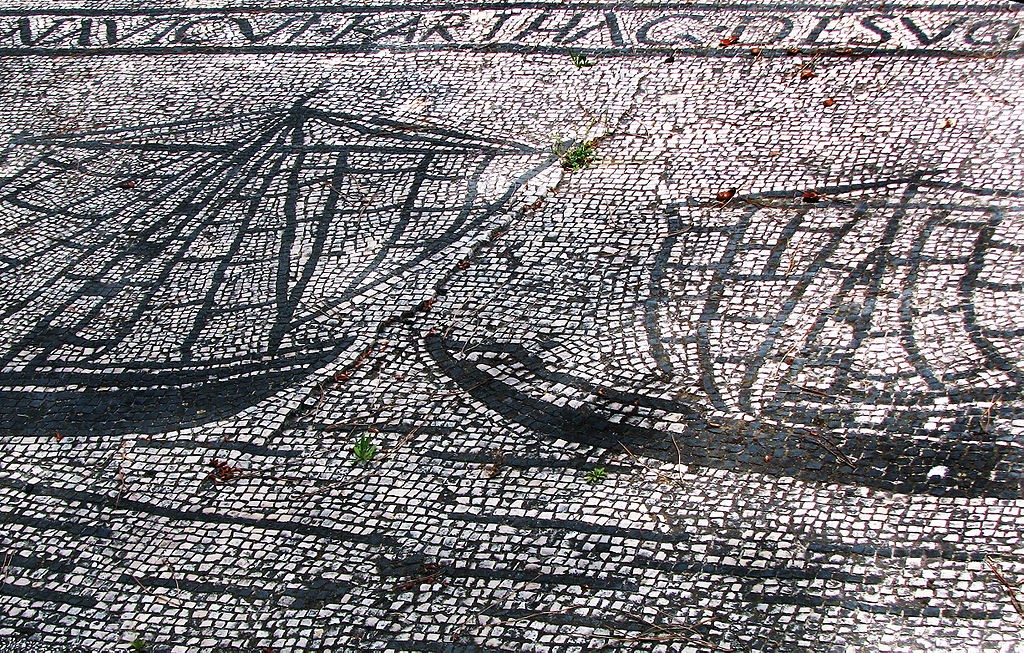Ghislaine Van Der Ploeg
University of Tampere
Many people in the modern world are used to travelling great distances with an ease of movement which is facilitated by the invention of passports and ID cards. An excellent infrastructure enables us to move between countries in a matter of hours. It is not difficult to prove who we are, to show our identities, when we reach our destinations. In antiquity, movement and establishment of identity were not as simple as they are in our modern world. As part of my research for the Finnish Academy project ‘Segregated or Integrated? – Living and Dying in the Harbour City of Ostia, 300 BCE-700 CE’ I have examined how mobility affected the establishment of identities and trade relations between Roman North Africa and Ostia. This work was presented at a workshop on ‘Ethniticà, identità, integrazione – Ostia, Porto, Roma/Ethnicity, Identity, and Integration – Ostia, Portus, Rome’ held at the Institutum Romanum Finlandiae and the Istituto Svedese di studi classici a Roma in Rome 18-19 October 2019. The other papers presented at this workshop examined the relationship between the cities mentioned in the title of the conference as well as issues of movement of objects and peoples as well as the creation and maintenance social and religious identities.
Increased mobility was one of the characteristics of the Roman Empire and the resulting improvement in infrastructure and increase in trade links enabled people to move around the Mediterranean and settle in a new place. The harbour city of Ostia, with its vast movement of people and goods, was emblematic of this phenomenon. The city was thought to have been founded in the 7th century BC by the fourth king of Rome, Ancus Marcius, and it was at the height of its power and importance in the 2nd and 3rd centuries AD. At this time, Ostia was a melting-pot of cultures, with people from all over the Roman Empire living and working here. Some of these individuals would have only stayed in Ostia for a limited period of time, for example, seasonal labours who worked during the sailing season or soldiers, but there were also many people from across the empire who came to Ostia and settled, worked, and also died in this city. An example of such an economic migration from Roman North Africa to Ostia is clearly expressed in an inscription erected in Ostia by Lucius Caecilius Aemilianus. In this inscription Aemilianus describes both his past and present careers. He states that he was a veteran from the first praetorian cohort and he also mentions that he held two civic posts, namely that of decurio, and duovir in Aelia Uluzibbira in Africa. However, after his period in Africa he moved to Ostia and worked here as a wine trader, where he was a member of a collegium, namely the corpus splendidissimum importatorum et negotiantium vinariorum. The members of this guild were involved in the import and sale of wine, especially in bulk. The combination of these two, the expression of both a past military and present commercial identity seems to be quite rare and it has, in fact, been argued that this is the only known epigraphic record of an ex-military man, participating in economic activities after he returned to civilian life.
Many people from Roman North Africa settled in Ostia and Russell Meiggs has argued that it was actually with Africa that Ostia had the closest connections, as a result of the grain imports.[1] A regular grain supply to Rome had been set up as early as 60 BC by Pompey and while at first this came mainly from Egypt, in the course of the 1st and 2nd centuries AD, Roman North Africa became the most importance source for grain. This period generally saw a boom in the production of agricultural goods in Africa, which were transported to Ostia. Despite being in different continents, the geographical distance between these places was but a short trip away by boat as Pliny in his Natural History (19.1.4) points out that it was possible for a ship to travel between Africa and Ostia in two days. The export of grain out of Africa from an early date ensured an excellent infrastructure was in place which could then serve to transport other products, such as olive oil, wild animals, and wine, out of Africa later on. There were twenty-nine ports between the provinces of Mauretania Tingitana and Cyrenaica which provided the infrastructure necessary for this trade. Africa Proconsularis was the best equipped province as it had twenty ports for ships to come and go from, most of which were probably built between the 1st and 3rd centuries AD.

Wine was a commonly produced product in the region of Aelia Uluzibbira, the city where Aemilianus was working as a civic official, as the soil and weather conditions were good for the cultivation of wine and most wines from the region were highly valued. Wine would, therefore, have been a logical choice as a product for Aemilianus to import into Ostia as he would have has access to this crop and would have already made connections with people from the region who could either act as his agents or from whom he could buy wine. Wine production in the pre-Augustan era had mainly been focused on Campania which produced some of the finest ancient wines, such as Falernian, but also cheap wine meant for mass consumption. However, this changed in the early imperial period, probably as a result of increased migration and mobility. Evidence from shipwrecks shows that Italian wines, especially from Campania, Latium, and Etruria dominated the market from the middle of the 2nd century BC to the Augustan period. At the end of the Republic, Italian wines were being exported to the Aegean, West Africa, Spain, and Gaul. 181 wine amphorae from the Augustan period were discovered close to Ostia in Longarina, fifty-eight of which came from Spain which indicates that wine was being exported into Rome at this point.[2] In the 1st century AD vineyards developed in Spain and Gaul to such an extent that people were no longer dependent on Italian wines and production became prolific enough to start exporting wines. North African viticulture only developed after the Roman expansion of the province in the 2nd century AD. Only one wine press in Proconsularis has been discovered but the evidence for viticulture in the province of Mauretania Caesariensis is plentiful. People in the former province could have perhaps fermented the wine in amphorae which were then also used to transport the wine in instead of using interred dolia.
There is plenty of evidence in Ostia suggesting a vivacious wine trade, for example amphorae stamps from the various provinces have been found here, amphorae sherds from Mauretania Caesariensis have been found in Ostian layers dating to the end of 2nd century AD. The trade and shipping connections with Africa shown in the Piazzale delle Corporazioni in Ostia are especially important. The piazzale was a square in the heart of Ostia, located near the temple, the function of which is not precisely known nowadays. It contains sixty-one stations around a central square which housed a temple. Each station included a mosaic and often also an identifying inscription. The likeliest explanation for this place was that the rooms here were used as commercial offices where transport of goods and people could be arranged. There are especially a great number of mosaics in these rooms depicting images of Africa, for example ships, palm trees, and African animals, often together with inscriptions indicating with which place in Africa a particular room was connected.

It is likely that these mosaics were not all placed here at the same time but were done so over a period of time between AD 180 and 200, perhaps as a result of new traders coming to Ostia from further places in Africa.
The stations show where sailors and traders from various North African cities had their trading bases. However, they also formed a social network and bridge for people coming from Africa who wanted to live and work in Ostia. The main problem for people coming to Ostia from another place, like Aemilianus, was how they could establish their identity without an established network of friends or family. As mentioned above, there were no passports or ID cards in antiquity and without these means of identification, identity had to be established and verified via established social networks, especially those connected to the person’s place of origin. The stations in the Piazzale formed such as social network and these corporations formed institutions by which migration could be mediated and controlled. They could help an individual from a different province establish himself and making connections with local people.[3] Traders could come from their place of origin and reach out to others from that geographical area. Africans who were already established in Ostia could vouch for a newcomer who wanted to trade with Ostians but also be a way through which this newcomer could become a part of Ostian society by being introduced into society and the creation of these trade networks was then based primarily upon ethnicity and was the springboard from which other networks could be created.[4] This shared geographical and ethnic background provided the trust upon which future trade was based. Identity and trade were highly connected and without the former being established, the latter could not take place as people could only trust you with their funds if they knew who you were. Inscriptions, showing a past and present career, were a good way of displaying who you were and establishing identity and trust.
[1] Meiggs (1973) 214.
[2] Tchernia (1986) 154; Unwin (2005) 123. Tchernia lists the distribution of amphorae as follows: 4 from Cos, 32 from Baetica, 26 from Tarragona, 42 from north Italy, 50 from Pompeii-Sorrento, 5 from Falernia, 8 Rhodian amphorae, and 14 unallocated Dressel 2-4 amphorae: Tchernia (1986) 154.
[3] Moatti (2006) 119.
[4] Terpstra (2014) 123, 124.
Bibliography
Meiggs, R. (1973) Roman Ostia. Clarendon Press: Oxford.
Moatti, C. (2006) ‘Translation, Migration and Communication in the Roman Empire: Three Aspects of Movement in History’ Classical Antiquity 25.1, 109-140.
Tchernia, A. (1986) Le vin de l’Italie romaine. Essai d’histoire économique d’après les amphores. École française de Rome: Rome.
Terpstra, T.T. (2014) ‘The « Piazzale delle Corporazioni » Reconsidered’, Mélanges de l’École française de Rome – Antiquité, 126.1, 119-130.
Unwin, T. (2005) Wine and the Vine: An Historical Geography of Viticulture and the Wine Trade. Routledge: London.

Kommentit